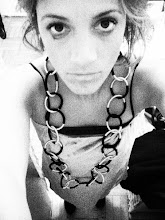I am a visual person by nature and by training. I see things in frozen frames. I first and foremost apprehend the formal qualities contained in these frames. I smell textures, hear colors and taste the composition. More often than not I flatten the world and make a mental picture before I start to rationally understand what lays before my eyes. Tom Ford's recent movie "A Single Man" felt that way. It felt as if moments were frozen in frames, edited out and re-sequenced. Then they were color calibrated, contrast perfected, softened, smoothed, cropped and served on a silver plate. There were very few frames which lacked that obsessive perfection yet the movie didn't feel over the top. The story was an equally well edited balance of drama and quietude, obsession and letting go.
The second to last episode in the movie is the brightest, wildest of them all. This is the one time Colin Firth - a single man - feels alive and excited to be so, too. Throughout the movie firth is living an elongated mourning for his deceased lover. He is sad and tortured outside of the very few prosaic black and white memories.


Perhaps the most epic episode is the late night randez-vous at Julianne Moore's house. Here, a single man is juxtaposed to a single woman. The man remains much more closed off to the world and to the the woman than the woman is to the man. Most scenes shoot Colin Firth from the back and Julianne Moore from the front; he is closed off and she is vulnerable. This tension breaks down when the two of them come unbearably together on the floor or on the couch.
I like this scene where we get to see the couple approaching and then walking away from us.
Below are 2 of the 4 or 5 precise and particular ways in which Firth tries to kill himself.


These two were my favorite scenes. The post-liquor shop encounter with the young gay man is backdropped with a pink Los Angeles sky and gigantic movie banner. The little girl in the blue dress at the bank is the only time bright color is introduced to the brown, black and white dominant frames.
Julianne Moore is among the numerous very attractive females portrayed in the movie. However, while the rest of the women are placed as back drop objects, Julianne Moore is the only real contrast to the overtly male world revolving around Colin Firth. Two sides of the female personality are embodied in Moore. The sensuous close-ups of Moore's face covered in pale powder, her pale pink nail polish, soft red hair, diffused freckles are contrasted to the dark contours of her eyeliner. Moore's soft spoken voice, pale pink decorated home are contrasted to her black and white striped night gown and femme fatale moves on Firth.
Another scene with many architectural qualities portrays Firth driving to school. Shots of the "brutal-modern" school building, almost black and white in appearance, are framed by the car window. The scale shifts back and forth from the bigger scale of the school building seen through the front window, to the medium scale of Firth driving seen through the side windows and finally to the small scale of the details of Firth's eyes and glasses reflected on the mirror.
Here Colin Firth, dressed in his usual uptight suit, is sitting on the toilet, next to an open window, stealing looks at the neighboring family's morning routine. The scene is very architectural, particularly the cropping of the slot window. Again we see Firth from the profile, the back and the front. All we need in order to understand the context and the event is a section, and two elevations.
The rigidity of Firth's personality is juxtaposed to the overly casual toilet situation. The loneliness of the single man is juxtaposed to the eventful life of the family next door.




















